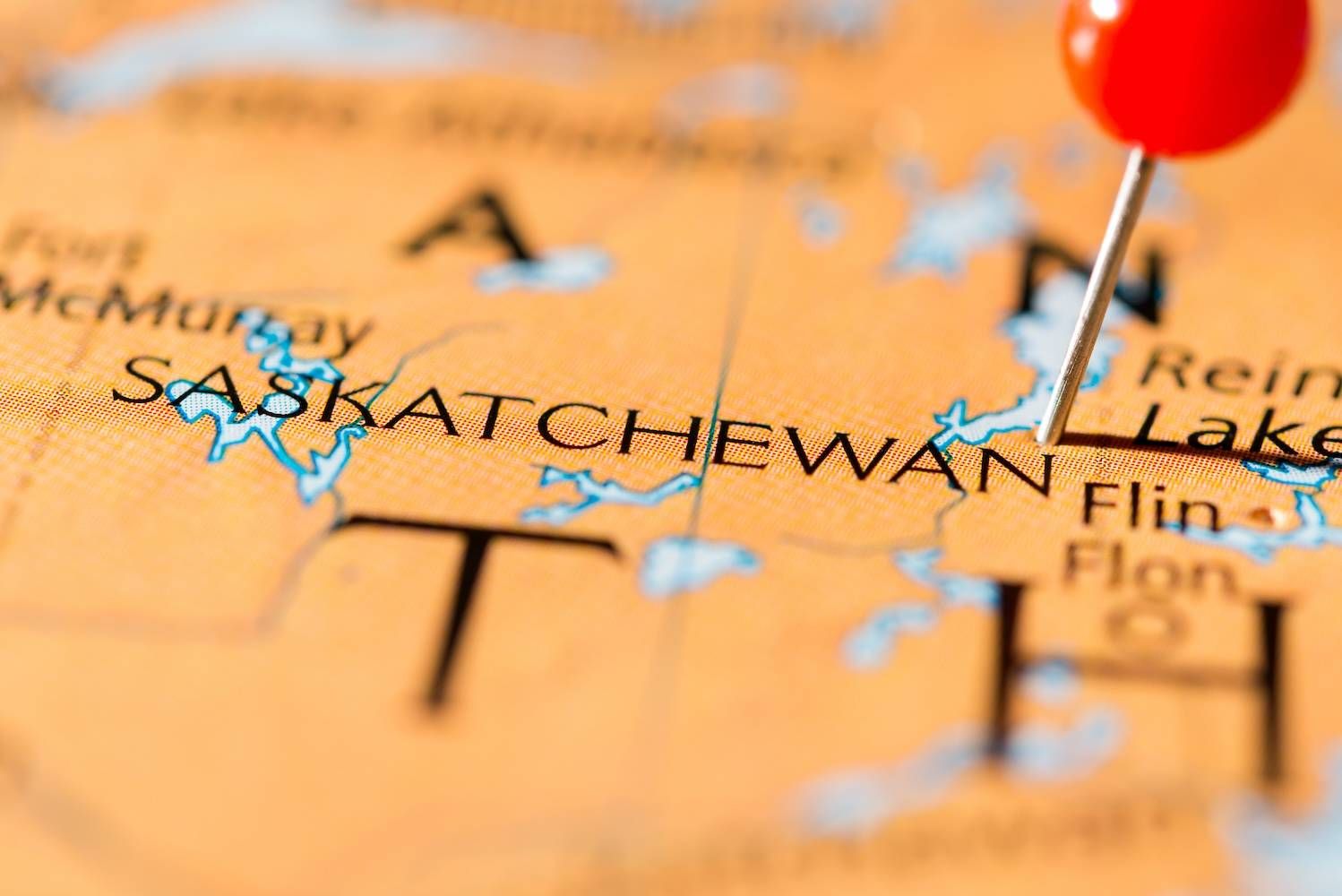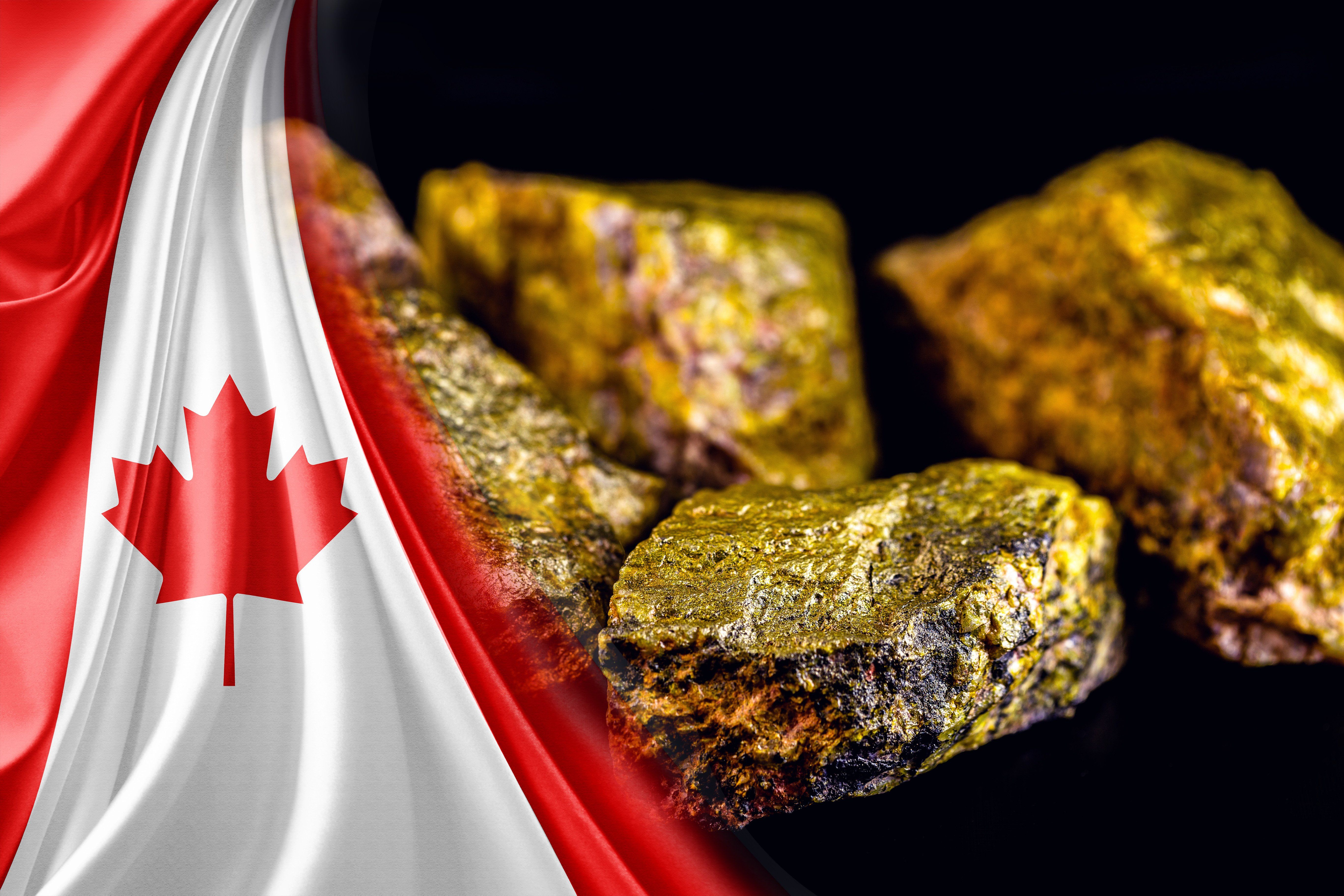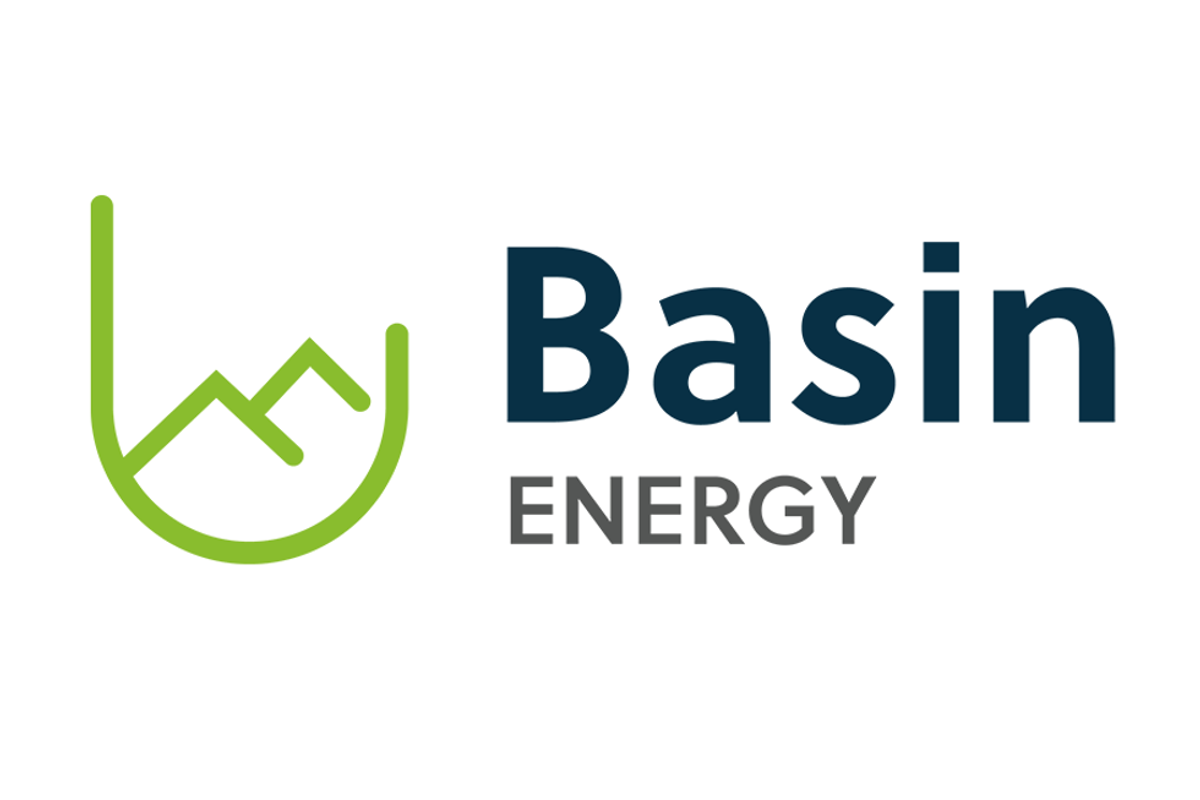(TheNewswire)

Saskatoon, Saskatchewan TheNewswire - April 11, 2022 UEX Corporation (TSX:UEX) (OTC:UEXCF) ("UEX" or the "Company") is pleased to announce the completion of its 2022 winter exploration programs for the Christie Lake and Hidden Bay Projects located in the Athabasca Basin of northern Saskatchewan (see Figure 1).
Christie Lake Project
Winter exploration drilling at Christie Lake totaled 5,653 m in 10 drill holes (see Figure 2) and focused on the initial evaluation of the three 2022 target areas:
-
1) To explore for the extension of basement -hosted uranium mineralization below, down-dip, and down-plunge of the Paul Bay, Ken Pen and Ōrora Deposits, as well as down-dip of existing uraniferous holes located in the gap areas between the three deposits to explore for basement-hosted uranium deposits;
-
2) Along the B Conductor Trend, targeting the B Conductor and DC Resistivity low that is adjacent to the A B trends located between the Yalowega B A Trends;
-
3) UEX's first ever drill test of the A Conductor trend, which is interpreted to be the immediate northeast extension of the mineralized P2 Fault Structure trending from the McArthur River mine.
Seven holes tested the area between the Ōrora and Paul Bay Deposits. The best result from the winter program was drill hole CB-164 that tested for basement mineralization between the Paul Bay and Ken Pen Deposits and intersected uranium mineralization in faulted rocks just below the unconformity that averaged 0.11% eU 3 O 8 over 1.0 m from 471.9 to 472.9 m. Strong hydrothermal alteration and fault structures were associated with the uranium mineralization, suggesting that a viable pathway is present to move uraniferous hydrothermal fluids into the basement environment below the known deposits in this area. UEX considers CB-164 to be an encouraging result that will require follow-up by testing during the summer drill programs.
Two other holes, CB-160 and CB-162 drilled to test the basement rocks between the Paul Bay and Ken Pen Deposits, also encountered a permissive fault structure with associated hydrothermal alteration that extends below the existing uranium deposits. Further drill tests are planned for the area this summer.
Two drill holes tested the DC Resistivity low adjacent to the B Conductor Trend. Drill hole CB-163 encountered elevated radioactivity in the sandstone column approximately 180 m above the unconformity coincident with fracture controlled sooty grey alteration and secondary hematite alteration. This radioactive interval averaged 0.03% eU 3 O 8 over 0.3 m from 298.6 to 298.9 m. It is uncommon to encounter elevated radioactivity so high up in the sandstone. This type of occurrence in the Athabasca Basin is often associated with more intense mineralization at the unconformity or below into the basement. These early test results from the DC Resistivity Low represent an exploration vector towards both the east and west towards the adjacent A & B Conductor trends. Follow-up in drilling near CB-163 along the A and B trends represent high priority drill targets for the Christie Lake summer drill program.
Hole CB-164, UEX's initial test of the A Conductor, encountered alteration of the basement rocks that overprinted the regional background paleoweathering. The bleaching of the basement rocks persists to 528 m, more than 70 m into the basement rocks. As an initial prospectivity evaluation of an area, this is a success and indicates that the entire 3 km strike length of the A-Trend is prospective and warrants further evaluation.
All drill core samples from the winter program at Christie Lake have been shipped to the SRC Geoanalytical Laboratory for geochemical analysis.
The winter drill program testing the area below the known deposits at Christie Lake has shown that UEX's hypothesis of the potential to find more uranium in the basement structures has merit. Uranium-bearing hydrothermal fluids are penetrating into the basement rocks. This winter's results have helped focus our plan for the upcoming summer program and provided further encouragement that drilling of these refined targets may yield additional uranium mineralization.
--- Roger Lemaitre, President and CEO
The highly anomalous radioactivity encountered in the sandstone column in the B Conductor area overlying the B-Trend DC Resistivity Low was a fantastic surprise and upgrades the prospectivity of this area. The UEX Team is eagerly anticipating following-up this radioactivity with the upcoming summer drill program.
---Chris Hamel, Vice-President, Exploration
Hidden Bay Project
Winter Drilling at the 100% owned Hidden Bay Project consisted of 3,072 m drilling in 19 drill holes (see Figures 3 & 4) to test two parallel conductive trends along 1,800 m of strike length within the Uranium-Nickel Sands ("U-Ni Sands") target area that is adjacent to Cameco's Rabbit Lake Mine. The 2022 winter drilling program followed up the reconnaissance drilling performed in 2021 and was able to extend the structure and alteration from the 2021 program and identified similar structure and alteration features to the Horseshoe and Raven Deposits that are located approximately 2.5 km south of the U-Ni Sands anomaly. Drilling in 2022 extended the U-Ni Sands alteration system in the area to 1,800 m length, UEX is waiting on the geochemistry results from the program to perform a full assessment of the future of this target area. Drilling in the Dwyer Lake area was postponed due to issues with drill contractor availability.
About Radiometric Equivalent Grades
When U 3 O 8 is preceded by an ‘e' such as %eU 3 O 8 , this indicates that the uranium concentration reported is a Radiometric Equivalent Grade ("REG") determined within the drill hole in-situ using a calibrated radiometric gamma probe. The estimation of uranium grades using down-hole probe radioactivity is an industry standard practice and is used by Athabasca Basin uranium producers and explorers to calculate REGs in both mine and exploration settings. The details on how eU 3 O 8 was calculated from the probe grades is outlined in our press release of May 24, 2016.
Samples from all holes have been collected for assay analysis to confirm these equivalent grades. The samples will be analyzed at the Geoanalytical Laboratory at the Saskatchewan Research Council in Saskatoon, Saskatchewan, with results expected in the coming weeks.
About the Christie Lake Project
The Christie Lake Project in the eastern Athabasca Basin, a joint venture with JCU, where UEX owns a combined 82.775% interest (UEX direct – 65.5492%; JCU indirect – 34.4508%). UEX is currently the operator for Christie Lake. The Project is located approximately 9 km northeast and along strike of Cameco's McArthur River Mine. The P2 Fault, the controlling structure for all of the McArthur River deposits, continues to the northeast beyond the mine and onto the Christie Lake Project. UEX believes that through a series of en-echelon steps the northeast strike extension of the P2 Fault not only crosses the Project but also controls the three known uranium deposits on Christie Lake: the Ōrora, Paul Bay and Ken Pen Deposits.
The Christie Lake Project is currently estimated to contain 588,000 tonnes grading 1.57% U 3 O 8 , which equates to 20.35 million pounds of U 3 O 8 using a cut-off grade of 0.2% U 3 O 8 and as documented in the "Technical Report for the Christie Lake Uranium Project, Saskatchewan, Canada" which was filed on February 1, 2019 and has an effective date of December 13, 2018. The Technical Report is available on the Company's website at www.uexcorp.com and on SEDAR at www.sedar.com .
About the Hidden Bay Project
The Hidden Bay Project is 100%-owned by UEX. The property is located in the prolific Eastern Athabasca Uranium Mining Camp and is adjacent to the Mines and Mills at the Rabbit Lake and McClean Lake operations operated by Cameco Corporation and Orano Canada respectively. The property represents a unique opportunity for brownfields exploration on a number of trends where uranium production has already occurred on the adjacent mine properties. The Hidden Bay drill hole database and decades of geophysical and geochemical data collection provide UEX with a rich data set to guide exploration activities that are focused on exploring for basement-hosted uranium mineralization within the 51,847 ha footprint of the property. The Property is also adjacent to the Horseshoe-Raven Project that is host to the Horseshoe and Raven Uranium Deposits that together contain 37,426,400 Lb U 3 O 8 at a 0.05% cut-off grade (See "Technical Report on the Horseshoe-Raven Project, Saskatchewan" filed on November 16, 2021, with an effective date of November 16, 2021). The Technical Report is available on the Company's website at www.uexcorp.com or on SEDAR at www.sedar.com .
Qualified Persons and Data Acquisition
The technical information in this news release has been reviewed and approved by Roger Lemaitre, P.Eng., P.Geo., UEX's President and CEO and Chris Hamel, P.Geo, UEX's Vice President, Exploration, who are each considered to be a Qualified Person as defined by National Instrument 43-101.
About UEX
UEX is a Canadian uranium and cobalt exploration and development company involved in an exceptional portfolio of uranium projects.
UEX's directly-owned portfolio of projects is located in the eastern, western and northern perimeters of the Athabasca Basin, the world's richest uranium region which in 2020 accounted for approximately 8.1% of the global primary uranium production. In addition to advancing its uranium development projects through its ownership interest in JCU, UEX is currently advancing several other uranium deposits in the Athabasca Basin which include the Paul Bay, Ken Pen and Ōrora deposits at the Christie Lake Project , the Kianna, Anne, Colette and 58B deposits at its currently 49.1%-owned Shea Creek Project, the Horseshoe and Raven deposits located on its 100%-owned Horseshoe-Raven Project and the West Bear Uranium Deposit located at its 100%-owned West Bear Project.
UEX is also 50:50 co-owner of JCU (Canada) Exploration Company, Limited with Denison Mines Corp. JCU's portfolio of projects includes interests in some of Canada's key future uranium development projects, notably a 30.099% interest in Cameco's Millennium Project, a 10% interest in Denison's Wheeler River Project, and a 33.8123% interest in Orano Canada's Kiggavik Project, located in the Thelon Basin in Nunavut, as well as minority interests in nine other grassroots uranium projects in the Athabasca Basin.
UEX is also leading the discovery of cobalt in Canada, with three cobalt-nickel exploration projects located in the Athabasca Basin of northern Saskatchewan, including the only primary cobalt deposit in Canada. The 100% owned West Bear Project hosts the West Bear Cobalt-Nickel Deposit, the newly discovered Michael Lake Co-Ni Zone, and the West Bear Uranium Deposit. UEX also owns 100% of two early-stage cobalt exploration projects, the Axis Lake and Key West Projects.
FOR FURTHER INFORMATION PLEASE CONTACT
Roger Lemaitre
President & CEO
(306) 979-3849
Forward-Looking Information
This news release contains statements that constitute "forward-looking information" for the purposes of Canadian securities laws. Such statements are based on UEX's current expectations, estimates, forecasts and projections. Such forward-looking information includes statements regarding UEX's drill hole results, uranium, cobalt and nickel prices, outlook for our future operations, plans and timing for exploration activities, and other expectations, intentions and plans that are not historical fact. Such forward-looking information is based on certain factors and assumptions and is subject to risks, uncertainties and other factors that could cause actual results to differ materially from future results expressed or implied by such forward-looking information. Important factors that could cause actual results to differ materially from UEX's expectations include uncertainties relating to the, interpretation of drill results and geology, assay confirmation, additional drilling results, continuity and grade of deposits, fluctuations in uranium, cobalt and nickel prices and currency exchange rates, changes in environmental and other laws affecting uranium, cobalt and nickel exploration and mining and other risks and uncertainties disclosed in UEX's Annual Information Form and other filings with the applicable Canadian securities commissions on SEDAR. Many of these factors are beyond the control of UEX. Consequently, all forward-looking information contained in this news release is qualified by this cautionary statement and there can be no assurance that actual results or developments anticipated by UEX will be realized. For the reasons set forth above, investors should not place undue reliance on such forward-looking information. Except as required by applicable law, UEX disclaims any intention or obligation to update or revise forward-looking information, whether as a result of new information, future events or otherwise.
Figure 1 – UEX and JCU Projects – Athabasca Basin
Figure 2 – 2022 Winter Program at Christie Lake
Figure 3 – The Hidden Bay Project and the U-Ni Sands and Dwyer Lake Targets
Figure 4 – U-Ni Sands Area 2021 and 2022 drilling
Copyright (c) 2022 TheNewswire - All rights reserved.









